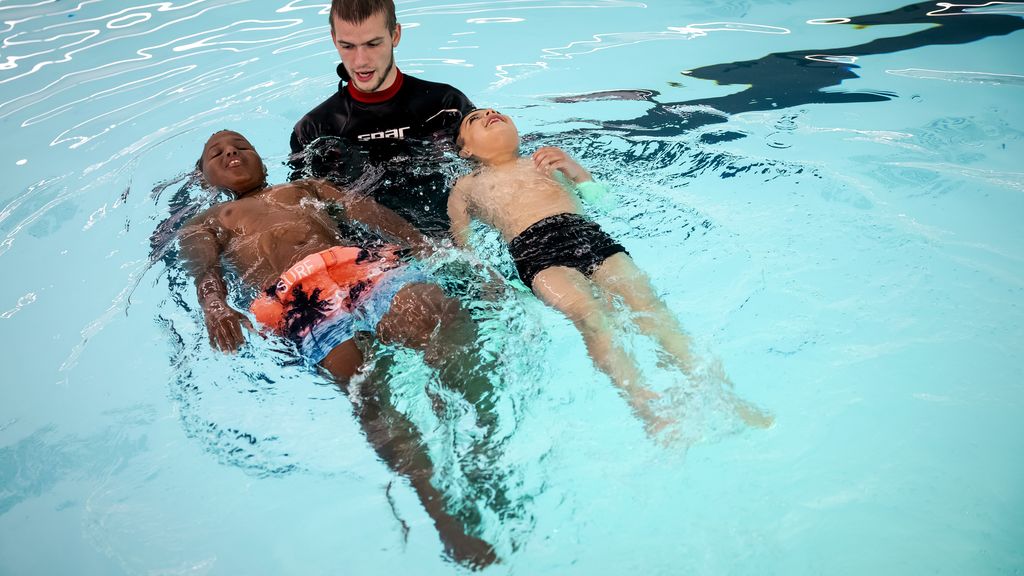1
Instructor - Task 2.2 Swim ABC
Instructor - Task 2.2 Swim ABC
Content
In the Netherlands, 87% of children between the ages of 6 and 16 have their A diploma. They receive lessons from clubs and commercial providers. It starts with water familiarization and becoming comfortable in shallow water. Once children can keep themselves afloat, they move on to learning the basic backstroke and breaststroke. Children learn to swim short distances in the water with clothes on and how to orient themselves. They also learn to swim through a hole. The children should be able to swim several meters of freestyle and backstroke. You'll receive a lesson plan from others. You are the one who executes this and teaches the children various elements.

For diploma B and C, the requirements become gradually more challenging. The distances increase, and children need to sustain swimming for longer periods. Unfortunately, only 70% achieve diploma B and 35% achieve diploma C. This is regrettable because only after achieving diploma C can a child safely enjoy themselves in a swimming pool.
Most clubs have lesson programs in which skills are taught. In the weeks leading up to the diploma exam, all diploma requirements are reviewed to ensure children know what to do during the exam.
Therefore, it's important to keep children swimming until they have all the diplomas. Diploma swimming costs parents a lot of time and money. But for children, it's crucial that they:
- enjoy swimming,
- feel like they are mastering swimming skills, and
- aren't shivering on the side of the pool.
So, there is an important role for you as an instructor. You'll learn how to approach this during the training.
Get activity badge
ABC-Vigorous Get this badge
The badge is awarded when you know how to teach swimming techniques and ensure that the swimming condition improves to meet the diploma requirements. It is your role to ensure that children enjoy swimming, have fun, and function well as a group.
Tasks
Task no.1
Issued by organiser or scanning QR code
You are capable of guiding children and teaching them so that they obtain their ABC diploma and learn swimming techniques effectively.
Awero not-for-profit organisation manages this platform and develops it together with leading educational organisations. The European Union's programme Erasmus+ granted co-funding for building the first version of this platform. Contact support@awero.org.
Platform
Change to another language:
